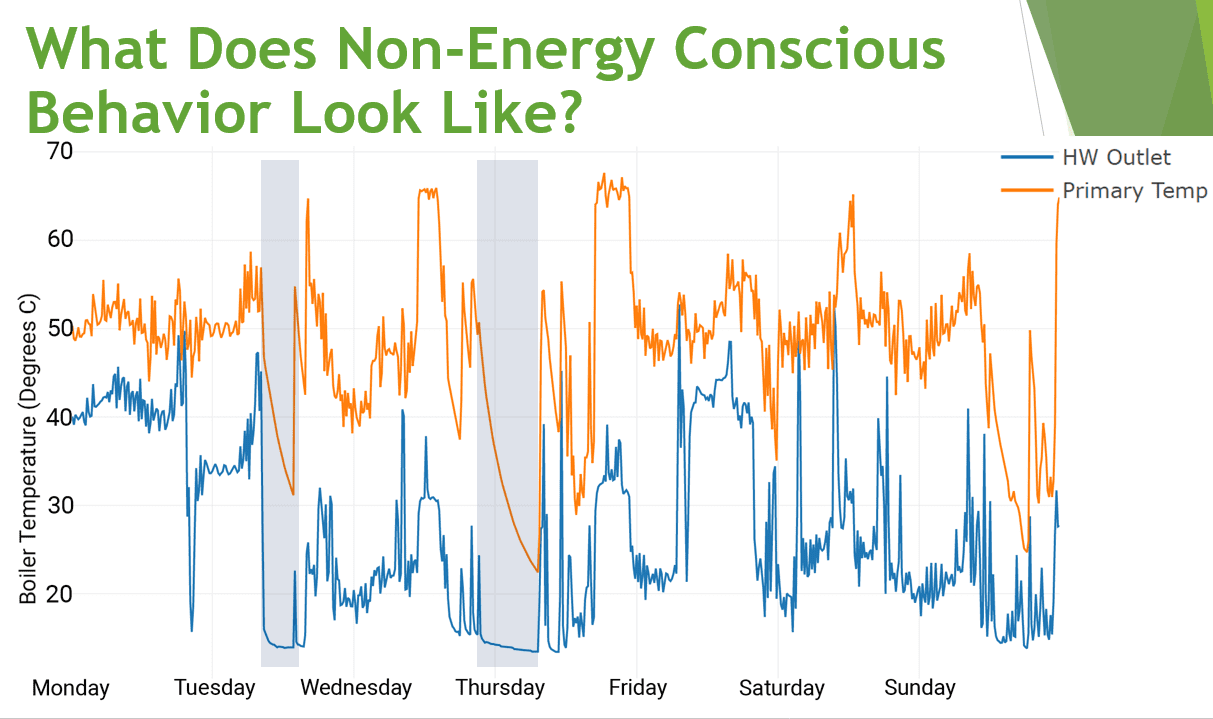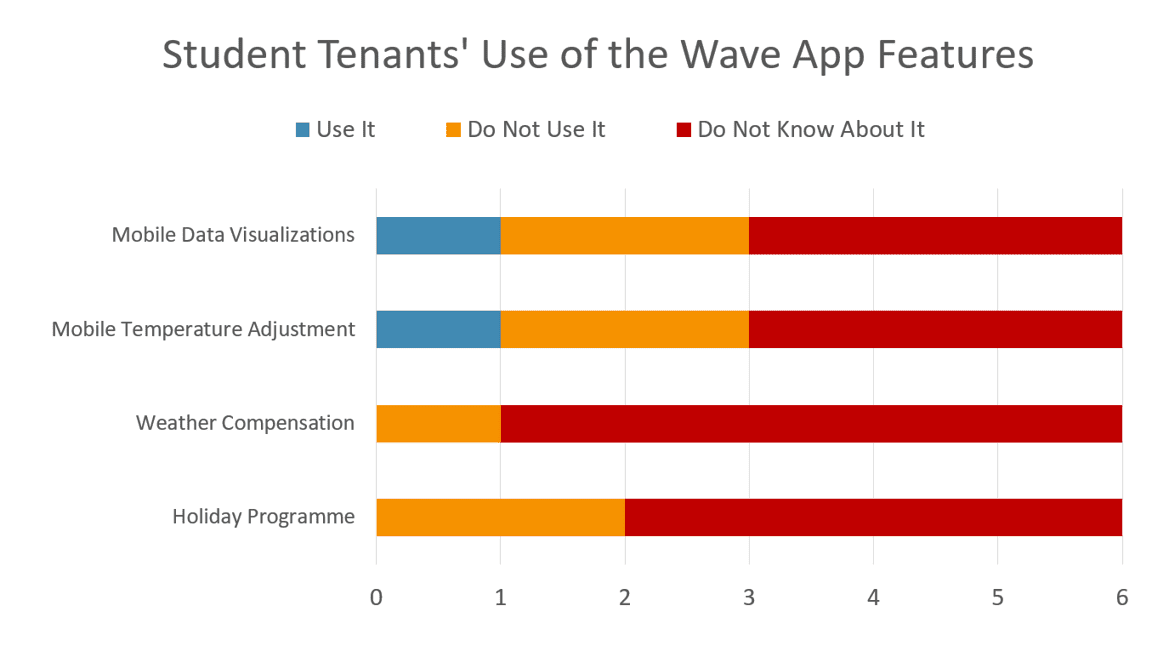Examining heating behaviours in off-campus student houses in multiple occupation
This is the seventh iteration of the Energize Project, which in the past has addressed the relationship between tenants and landlords, the role that technology plays in five specific student houses of multiple occupation (HMOs), and how tenants’ habits and perceptions shape their energy consumption. This particular iteration was exciting because we were given the logging data for an entire heating season from Worcester Bosch Boilers in four of the five HMOs. These boilers were equipped with a smart thermostat called the Wave, which was able to be controlled through a smartphone app.
The most any other researchers have had was a week’s worth of data, so we were able to do a much more thorough analysis of the heating behaviours from the student tenants.
The visualization tool that we developed to view the boiler data can be found at https://energizeworcester.wp.worc.ac.uk/code/.
The goal of our project was to examine the patterns in expressed and observed heating behaviour in student HMOs around the University of Worcester and provide recommendations to improve energy management. In order to develop a clear picture, we surveyed all of the stakeholders involved with this particular issue: the student tenants, the landlords, the letting agents, and staff from the University of Worcester. We then labelled the HMOs as HMO 1, HMO 2, etc., and compared the survey data with the logging data in order to better identify patterns in behaviour. Through the visualization tool, we were able to identify a wide range in behaviours (all of which you can view on the website above).
For example, This is HMO 1, our exemplary HMO that is very energy conscious and sticks to a relatively consistent schedule. As you can see, these 6 arrows all point towards periods throughout the week where the boiler was inactive. What this means, is the tenants didn’t just lower the thermostat, but they turned off the heating completely. Only to be turned on the following morning when one of them showered.
To contrast our exemplary HMO, here is HMO 4, which we considered to be our non-energy conscious HMO. As you can see, the entirety of Monday the thermostat is on, and only twice throughout the week do they appear to either lower the thermostat or shut it off. Compared to how the previous HMO did it nightly. On average, the temperature was much higher than the previous HMO. Also, it is much harder to find any pattern in this data, signalling that most of the time these tenants leave their thermostat on regardless of their schedules. Leading to irregular activity.
Our primary method of analyzing the logging data was through the primary internal temperature of the boiler (we did not have access to data regarding the ambient temperature of the house or the thermostat temperature) and the temperature of the hot water outlet of the boiler. This allowed us to identify primarily when the boiler was active, and when the tenants were home.
We found that HMO 1 turned off their boiler regularly, and HMO 2 also periodically reduced boiler use/ Conversely, there are very few periods of inactivity in the data from HMO 4; it appears as though they rarely lower the temperature in their house, even when they are out of the house for a long period time. We found that the use of the smart thermostat was correlated with energy-conscious behaviour. In HMO 1, the tenants used the Wave app to monitor their boiler’s energy use and adjust the thermostat temperature, and they had the most energy-conscious behaviour of all the logging data. The landlord of HMO 2 used the Wave and this house exhibited fairly good energy management. The residents of HMO 4 did not use any smart thermostat features, and the logging data indicated poor energy management. We also found that the landlords’ actions had a great impact on the students’ use of the smart thermostat. In HMO 1, the landlord showed the tenants how to use the app and the tenants used the app faithfully. In HMOs 2 and 5, the landlord did not show them how to use it and the tenants did not use it.
Finally, we discovered that billing methods have a significant impact on students’ energy use. We concluded that utilities-inclusive rent removed the incentive for students to manage their heat effectively. To address these findings, we recommended that the University of Worcester and the landlords educate students to better manage their heat use and landlords investigate alternative billing methods to incentivize energy-conscious behaviour. We believe that these recommendations will lead to better energy management in student HMOs.
Watch a video presentation of this research





Great piece of research, glad I managed to see the presentation in the end!